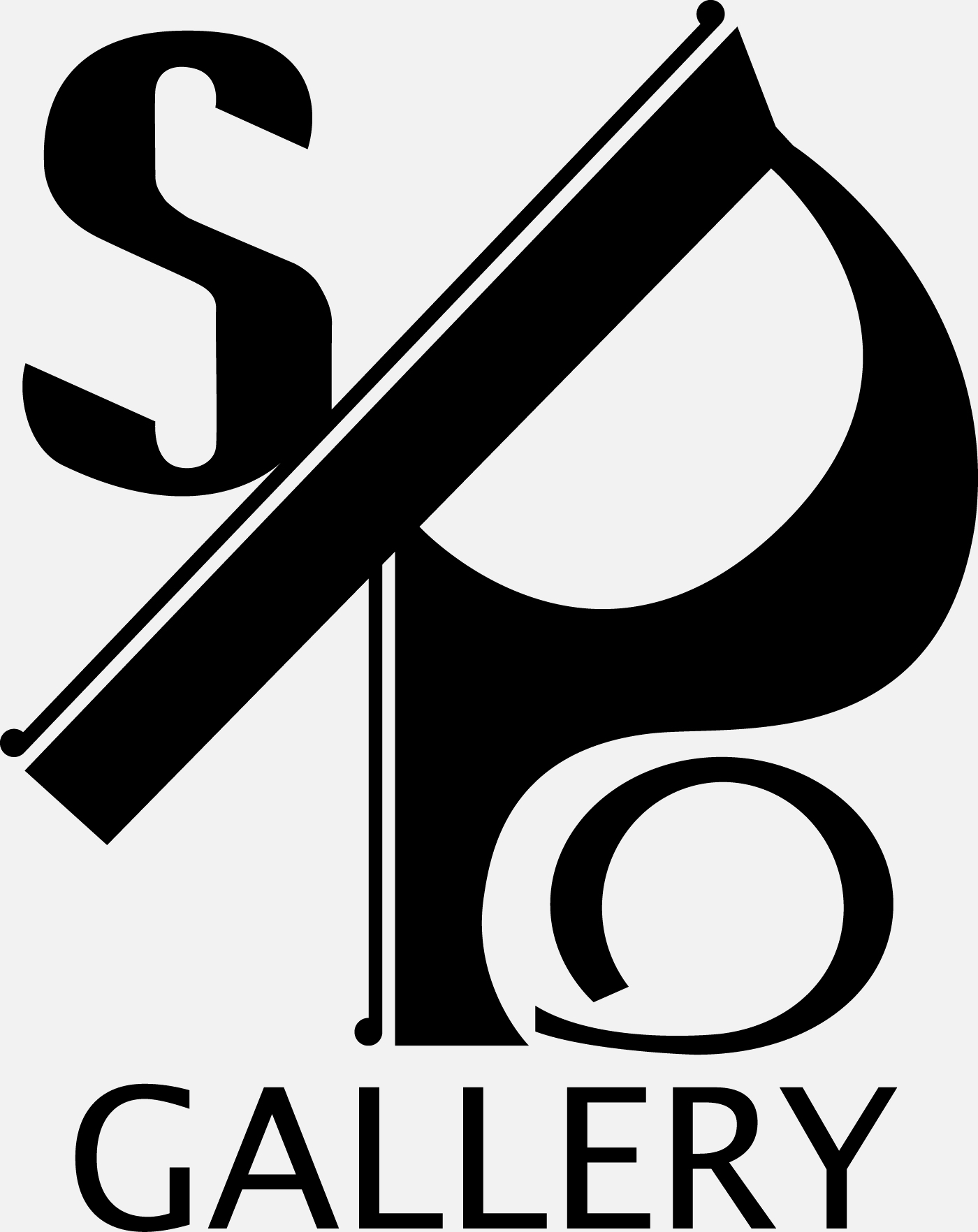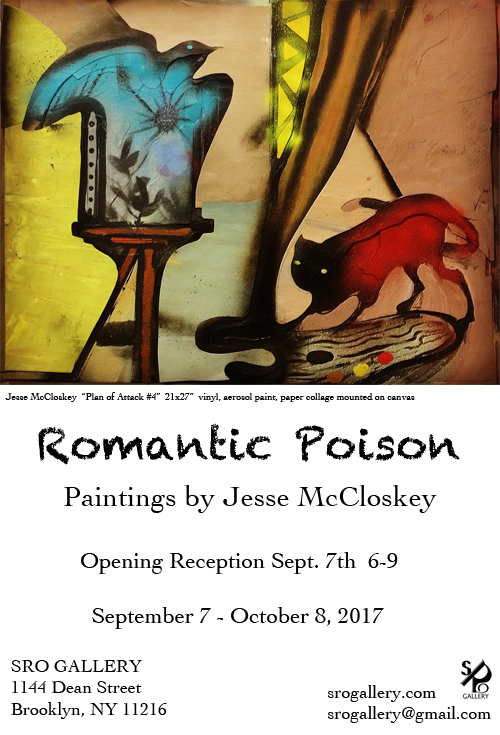Romantic Poisonpaintings by Jesse McCloskey September 7 – October 8, 2017
“For me painting is a way to forget life. It is a cry in the night, a strangled laugh.”
- Georges Henri Rouault
Like the French painter Georges Rouault, McCloskey’s preoccupation with the spiritual significance of things is so absorbing that it merges with reality itself. Leaving behind preconceived ideas of visual description, McCloskey in these Nature Morte works at SRO, imbues the genre with intensity and much melancholy. In the process of Jesse’s studio practice, which can take months for each work, he captures an air of calculated pretense and shadowy simulacra by adapting the surface with paper cuts, paint spray and collaging techniques that often bulge or warp the surface inward with psychological associations barely contained. The sense of the appearance of things is assaulted, nearly obscured in his process. Soon after objects are located within the space of the canvas a new emerging object or narrative is accommodated for. As if McCloskey can only make something very positive by trying to beguile himself for a time in formalism while free associations are revisited. There are recurrent images of demonic female figures, death like heads, winged birds or potions and shrouded figures in haunted garrets where an easel stands as doorman to the hallucinations.
Jesse carves out his own path into the deep genre of ‘Nature Morte’ combining vignettes of his own trysts and longings that connect to larger mythologies; tales of Zarathustra, Aristotle & Phyllis and Edgar Allen Poe are drawn into his own. His painting joins up with medieval stained glass and acquires the phosphorescent colors characteristic of it. The effect is one of painterly volume rather than plastic bas-relief, paper cuts aside, and stems from color and linear continuity. Eros and Vanitas mingle in the disruption, as do skulls, cats, and fetish boots; contemplations on love and change, death and the hunted soul. As when Hamlet finds the old jester’s skull, “Alas, poor Yorick!”, we are meant to ponder the commonness of death and the vanity of life.
The dark and the light, hell and heaven, the damned and the blessed, sin and guilt; all are skillfully portrayed in each of McCloskey’s paintings. McCloskey holds fast to his ability to find the visual threads in a painting that form it’s continuity and engages the viewer with the paintings wholeness. He is free to follow the paintings lead through a process of layering, spray painting, adding and omitting until that continuity is reached.
His compositions provoke analysis; we want to solve and understand, but McCloskey’s image doesn’t give us just one answer to its riddle.
-Don Doe, Cecilia Whittaker-Doe



